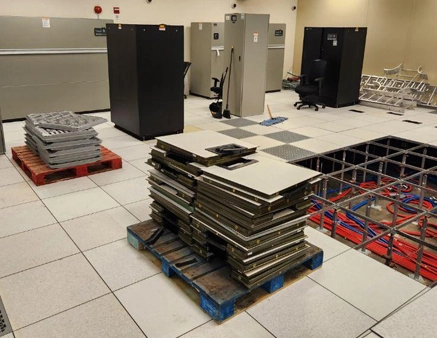
Data center decommissioning is the strategic process of removing hardware from a data center for various purposes such as relocation, resale, recycling, or responsible disposal while ensuring a seamless transition of data to new servers. Recognizing the data center as the powerhouse of business operations underscores the critical nature of this process. Given the sensitivity of company data, decommissioning extends beyond mere hardware dismantling; it involves meticulous planning and execution. The process entails more than rewiring network cables and installing new servers. To initiate a successful decommissioning, IT administrators should develop a comprehensive Data Centre Decommission Project Plan and a Data Centre Decommissioning Checklist. These documents play a pivotal role in facilitating a smooth decommissioning process without disrupting ongoing business operations.
Key Aspects of Data Decommissioning
Data decommissioning encompasses a range of activities, including:
- De-installation: Removal of computers, servers, cabling, storage devices, power generators, and other data center equipment.
- Disposal: Proper disposal of end-of-life storage devices like hard disk drives, solid-state drives, CD ROMs, and DVDs.
- E-waste Management: Disposal and recycling of electronic waste materials generated during the decommissioning process.
- Recycling: Extracting hardware parts from e-waste for reuse in manufacturing new IT equipment.
- Demolition and Relocation: Dismantling and relocating servers that are still in use, ensuring a smooth transition.
- Data Sorting and Shredding: Sorting through old data, identifying redundant information, and securely shredding data that is no longer in use.
Understanding Data Centre Decommissioning
Data center decommissioning is a methodical approach to de-installing servers and outdated data infrastructure, creating space for modern data management systems. With the increasing adoption of cloud-based data solutions, decommissioning has become a routine activity for companies adapting to evolving technologies. Executing a successful data center decommission requires a well-defined project plan, a comprehensive checklist, and effective communication with all departments to inform staff members about the process.
Key Components of Data Decommissioning
- Decommissioning Project Plan: This document outlines the step-by-step procedure for decommissioning, including the timeline, data backup schedules, and reporting templates. It provides a structured framework for the entire decommissioning process.
- Decommissioning Checklist: The checklist serves as an inventory, capturing details of servers, desktops, laptops, printers, routers, and other IT equipment. It includes information such as IP addresses, model names, software details, and storage information.
Typical Items on a Data Decommissioning Checklist:
- Scope of Work: Clearly defining the scope of the decommissioning process.
- Asset Inventory: Listing all data center assets and peripheral equipment.
- Decommissioning Plan: Outlining the plan with specific details like timeframes, responsibilities, designated individuals, budgets, and roles.
- Required Tools: Identifying the tools necessary for the decommissioning work.
- Action Plan: Detailing the steps for physically removing infrastructure, backing up data, and ensuring secure data erasure.
- Relocation Plan: Addressing the procedures for packing, clearing, and the movement of assets during the decommissioning process.
In summary, data center decommissioning is a strategic initiative that demands careful planning, efficient execution, and thorough documentation to ensure a smooth transition while safeguarding the integrity and security of sensitive data.

